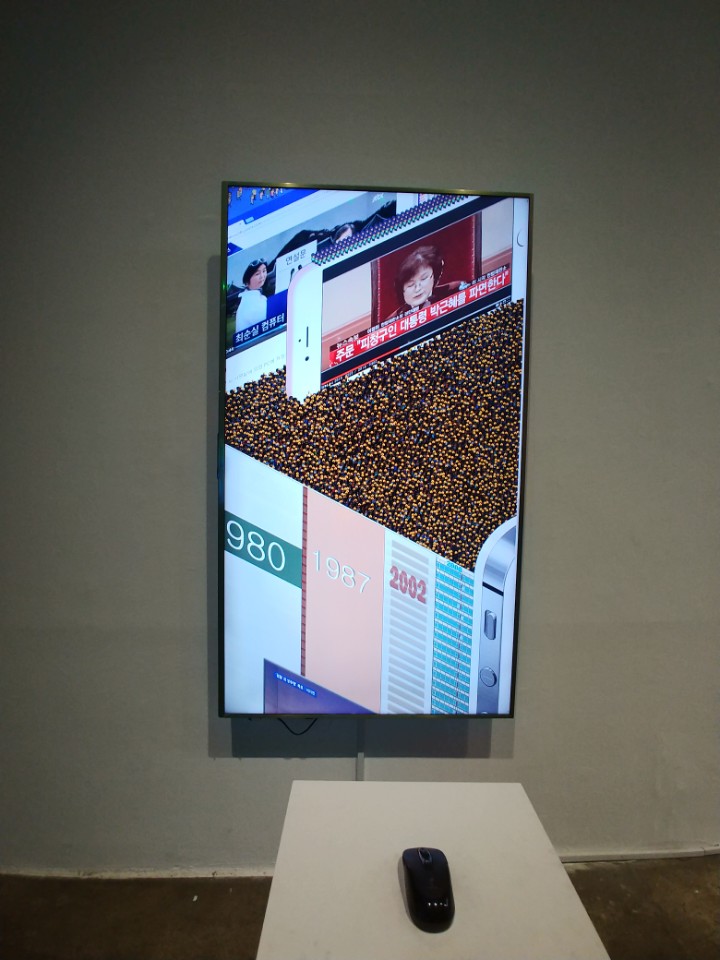디자인의 중심 광주 비엔날레에 방문하다
Have you heard about the Biennale? The Biennale, meaning 'every two years' in Italian, is an art exhibition held every other year. Gwangju Biennale is founded to turn the democratic spirit of Gwangju into the new cultural values. The theme of the Biennale this year is ‘Imagined Borders’. It looks at the boundaries between politics, economy, sentiment, and generations across geopolitical boundaries in various perspectives. This year, Gwangju Biennale consists of seven sections. There are four sections in Gwangju Biennale, and three in Asian Cultural Center. Let’s take a look at three sections in Gwangju Biennale.
The First Section< Imagine Nations / Modern Utopia >

This section reveals flaws and contradictions of national identity through modernist architecture looking back on the utopia's dream of the 1950s and1970s when it was a social and political upheaval. The wooden frame of this work was modeled after the modernist building of the Democratic Republic of Congo, which was designed around the end of the Belgian colonial rule (1908-1960). Between the wooden frames, video clips of young people singing ‘Entered RaMain’ and African Independence song are showing. It is truly monumental that people sang a song of pain and freedom in a building that is a symbol of the colonial era.
The Second Section< Facing Phantom Borders >
Border-related issues including refugees are intensifying worldwide these days. This section tries to find answers to what borders and migration mean today rethinking the concept of border, humanitarian and national security. Through this, the artist criticizes the inequality between the First and Third Worlds. The photos on the wall are about countries the artist could not enter without a visa just because he is a Third World citizen. There is an ironic map which consists of first world country citizens that can travel to any country without a special visa.
The Third Section< The Ends: The Politics of Participation in the Post-Internet Age >

This section analyzes post-Internet art as a political participant, as well as the problem of Internetcensorship. This artwork expresses political movements that people have participated in with flat mobile devices by pixel. Many social issues are expressed in the pixels. From Gwangju 5.18 Democratic Movement in the1980s to protests against the biased investigation in Gwanghwamun can be seen. At the end of the screen, there are all the years in the thickness of the cell phone indicating that social issues have been made from small cell phones. Many people hesitate to visit the Biennale due to the difficulty of understanding. Considering this, Gwangju Biennale runs docent in every hour and provides booklets containing detailed descriptions of the works. Also, because the works represent the realities of the world, visitors can understand the world deeply. As a global citizen, it would be good to visit the Biennale.


